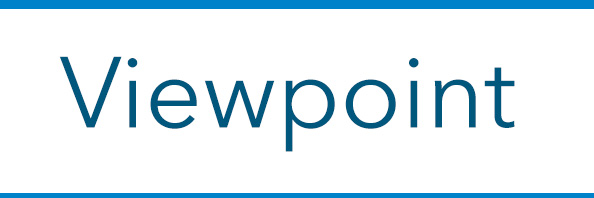As we gear up for a gradual return to campus at Borough of Manhattan Community College (BMCC) in New York City, the course modes we established during the pandemic remain flexible in order to protect the health and well-being of everyone in the BMCC community. This fall term, students can choose courses in three modes: in-person (on campus), online (virtual) and hybrid (a mix of both). Remote learning, while not ideal, is not something we can put back in the box just yet.

Having three options of course mode shows how far we’ve come since the coronavirus pandemic ramped up in March 2020 and all our classes moved to a remote format. We began teaching through platforms such as Zoom in the shadow of a public health crisis that disproportionately affected lower-income New York City neighborhoods where most of our students lived. Local business closures and related job loss put students already affected by housing and food insecurity at higher risk. Lack of high-speed internet made it harder for them to excel in class, as was having to share a family computer or attend class through their phones.
While these factors and the overall shutdown of in-person education have driven down college enrollments across the country, the impact on our students is not always something that can be numerically tracked. Events of the last year have exacerbated mental health issues that affect academic performance, including anxiety — and in particular, math anxiety.
New layers to math anxiety
I have researched math anxiety and related coping strategies for more than 20 years, starting with my doctoral dissertation at Teachers College, Columbia University that examined how adult learners manage math anxiety, and continuing today in my role as chair of the BMCC mathematics department, consulting with faculty to help students overcome learning blocks.
We are dedicated to addressing math anxiety as a barrier to student success, and have found ways to tear it down — but this situation is different. We must revisit our strategies for addressing the fear of STEM content and adapt our approaches accordingly.
Among other priorities, we must stay mindful of the fact that in addition to adjusting to virtual learning, our students have been deeply affected in the last year by the momentous surge of public activism in response to police violence and systemic racism. They have witnessed and joined in this historic moment of reckoning in American history — even as they completed their college courses online.
Students who already had anxiety about their math skills have been particularly hard hit, academically, by the pandemic and this turbulent year. It feels isolating to struggle with course content, and that feeling is amplified by the literal isolation of remote learning.
Faculty rose to the occasion last spring by adjusting their pedagogy to create course continuity on platforms like Open Lab, Blackboard and Zoom. We learned the value of sharing documents in real-time, shared-screen formats, using discussion boards and posting web resources like video tutorials. We found ways to continue working in small groups, to validate different narratives for solving the same problem and to celebrate achievement.
We adjusted our pedagogy and delivery of content, and as we have seen a new level of academic stress and math anxiety arise in our students, we have adjusted our responses accordingly.
Create multiple points of contact: student to student, student to professor
Strong student-teacher and student-to-student connections build the kind of community that supports learning as well as de-escalate stress and math anxiety.
As instructors, our listening and observational skills are tantamount in the virtual environment. We can’t walk around the classroom and sit with students one-on-one as they complete class assignments, but we can be aware of the messages of confusion and panic they are sending in a Zoom format.
As we’ve learned, it’s critical to be aware of whether students keep their cameras on and it is more critical than ever, to notice who does and doesn’t speak out in class, or who has a camera on but isn’t looking at the camera and seems distracted.
Providing different ways for students to communicate in class — by using the raised hand icon, by typing a note into the chat column, by joining a smaller group that the professor can drop in on before reconvening as a full group — are a few options.
Overall, we need to provide as many points of contact as possible so students are more likely to stay in touch with their teacher and their classmates, as well as to access the free counseling, tutorial and social resources available at our colleges.
For example, many students learn to cope with math anxiety by forming study groups. Our students aren’t able to meet casually in the cafeteria or find a quiet table in the library, but they are forming their own study groups through Zoom and other platforms. If you know students who are doing this, invite them to drop in on your class and share their experience with your students.
It is not possible to overestimate the power of peer-to-peer support. We can also invite alumni and students who have taken our classes to talk to our current students about how they coped with learning anxiety.
Finally, virtual faculty office hours are essential in the remote learning environment. These can be by appointment or drop-in. Students must have optional ways to communicate with their professor, to go over assignments or talk about their general progress and relationship to the material.
Destigmatize the seeking of mental health support and put a face on campus services
In every community, there are different norms for responding to mental health. To best support our students, we must be intentional about de-stigmatizing mental health issues and make sure they are aware of how to access the free mental health facilities on our campuses.
A campus counselor can visit your virtual class and put a human face — albeit virtual — on the services provided. They can talk about ways to avoid social isolation — phone, text, Instagram, Snapchat, FaceTime, Skype and others — and how easy it is to make an appointment with a counselor. They can demonstrate how to de-escalate stress through breathing and relaxation techniques and self-care. They can also talk to the professor privately, on how to refer a student confidentially and respectfully for a counseling center appointment.
If your college has racial trauma resources, you could consult these to reflect on your own experience, and to gain insight for validating students’ experiences. Mentoring programs are another important support resource for students; a mentee could visit your class and talk to your students about the value of having a mentor and the benefits of the mentoring community.
Student groups on campus are another important resource for building a sense of belonging. A student leader from a peer mentoring program or student activities group, even a student who has used the college’s tutoring services, can break through the isolation a student in your class might be feeling.
Math anxiety lessens its grip on a student who feels they are part of a campus community, who feels validated for their response to racial discrimination, who is connected to other classmates, able to access the services they need, and easily able to make contact with their professor.
Cultivate empathy for students whose experience is not like yours
Resources for faculty and staff are available on many campus websites, and provide support for coping in the remote world and detecting student distress, as well as staying aware of our own emotional response to the changes the pandemic has brought to our lives.
As we consider coping strategies, it is good to remember that because of the pandemic, many of our students have been home with siblings, parents and others who are not used to being together all the time — which can exacerbate family tension.
We need to be sensitive to the fact that our students might be sharing computers, or not have the kind of privacy or quiet that they need in order to study. While some colleges have limited quiet-study areas that can be reserved during periods of remote learning, this is not an option for everyone.
It’s also important that those of us who are working from home be sensitive to the fact that our students and many times their family members have not been accorded that option; that they might have lost work or have been forced out of their safety zone at home to keep an essential, public-facing job.
Empathy can help inform our response to students’ anxiety about completing assignments and grasping concepts. If they feel our empathy and what we call the “growth mindset” — our strong belief that they can excel in their studies, given the right supports — they are more likely to push through their fear of math, and apply their emerging skills.
Adapt strategies for addressing math anxiety as higher education evolves
In the end, these general areas of support — facilitating peer example and encouragement; creating multiple points of contact for student-student and student-teacher interaction; putting a face on resources like counseling, racial trauma and tutoring; destigmatizing mental health issues and cultivating empathy — can help address math anxiety in the remote learning class.
And as vaccines are adopted and society begins to reopen, we need to continue developing and sharing with each other, strategies for removing math anxiety that are appropriate for our students and specific to our course content. We need to continually assess these strategies as virtual learning evolves into hybrid learning options and some of us safely manage face-to-face classes next fall.
There is much more to say and think about on this topic. I know that faculty across the disciplines are working to make the virtual learning environment a productive experience for everyone in our classes. Our common ground is our agreement that math and learning anxiety must not be allowed to interrupt the success of any student, or get in the way of underrepresented students as they strive to excel in the STEM classroom and move with confidence through their higher education careers.





